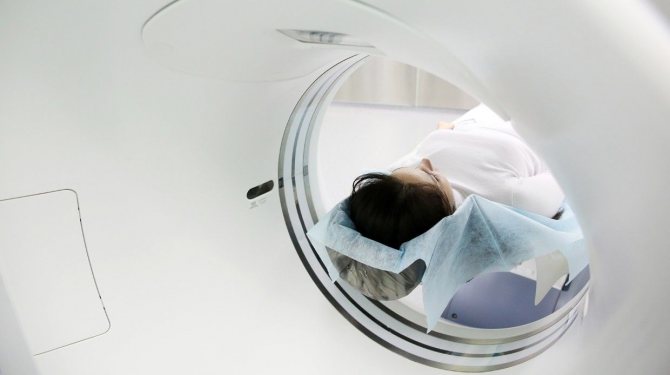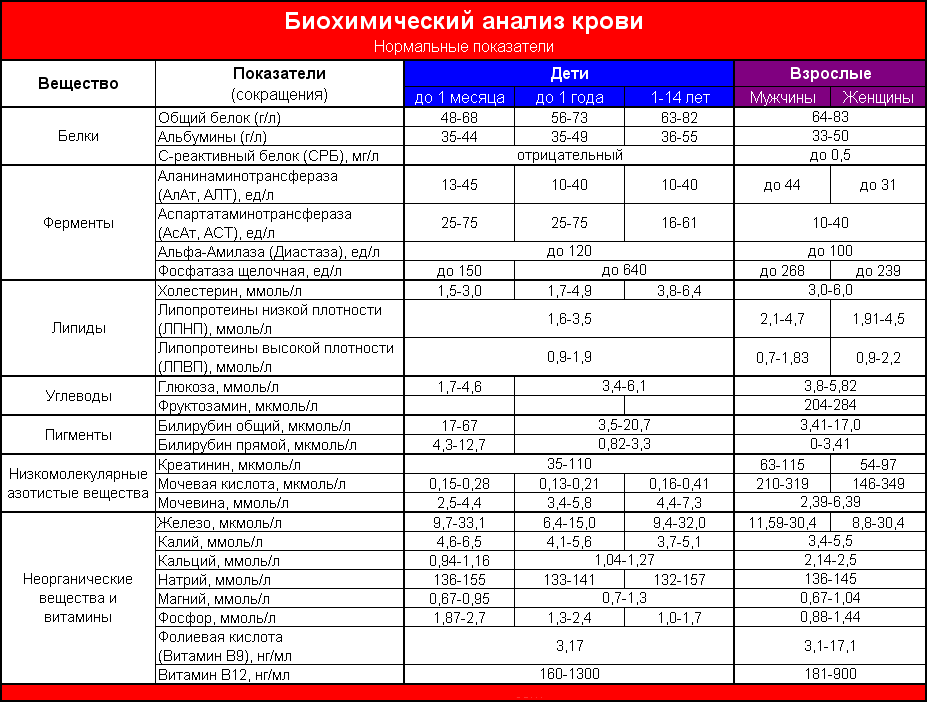Blood test - what is it for, what does it show?
Multiple studies of the body’s condition begin with taking a sample of blood biomaterial.
The analysis is carried out for preventive purposes (it is advisable to take it once a year), as prescribed by a doctor, before undergoing treatment in a hospital. Its indicators most clearly inform about the state of the body and the presence of various pathologies in the body. Blood is collected from two locations:
- Collection of biomaterial from the ring finger of the hand is taken for general analysis (GCA).
- Venous samples are taken for general clinical analysis and general biochemical analysis (blood biochemistry). It is considered the most informative compared to fingerprint material. Will show the most accurate results.
But to obtain the most objective indicator of the patient’s health status, it is advisable to conduct both studies. Using general criteria, it is possible to identify additional hidden pathologies through analysis.
The material for analysis is taken before the first meal enters the body on the day of the analysis (on an empty stomach). This important factor provides objective indicators of sugar, ESR, hemoglobin in the patient’s body.
In addition to the above indicators, a general clinical blood test also shows the level of red blood cells, leukocytes and platelets in the human body. Knowing the indicators ensures that the correct treatment is prescribed to the patient.
Nowadays, most studies are carried out on automatic analyzers, but microscopic research methods are also used.
The analysis checks for 24 parameters, the main ones of which are recognized as:
- The absolute content of leukocytes - that is, those bodies that fight microorganisms in the human body.
- The content of red blood cells is the delivery of oxygen to tissues and organs.
- Hemoglobin level in the blood.
- Platelet level indicator.
- General enzyme composition of blood.
The remaining indicators are qualitative indicators of the impact of red blood cells, platelets, leukocytes, and hemoglobin in blood function.
Causes of cancer
In fact, it is still not clear why healthy people develop malignant tumors. There are only a few identified factors that may influence cancer risk:
- Statistics show that fair-skinned people suffer from such diseases more often than dark-skinned people. Perhaps this has something to do with racial genetics and predisposition.
- Poor nutrition, prolonged hunger strikes, lack of any vitamins or substances in the body.
- Overweight and obesity.
- Smoking, tobacco smoke.
- Genetics. Unfortunately, there are people who are predisposed to one or another type of cancer.
- Ecology and radiation background. In places and cities where everything is bad with these things, people get cancer more often.
- Ultraviolet radiation.
If you suspect cancer, you can get blood tests immediately.
- Characteristic signs of bone pain due to cancer
What should you do before the blood collection procedure?
As practice shows, many patients make gross mistakes before taking tests, and later the results turn out to be inaccurate and with deviations. Because of this, the doctor may make an incorrect primary diagnosis based on the interpretation of the clinical analysis and blood biochemistry.
What rules should you follow?
- For two or three weeks you need to stop taking any medications.
- For 2 - 3 days do not consume: fried, fatty, high-calorie foods and alcohol.
- It is clear that many will not be able to completely give up smoking, but at least for a day they can avoid smoking. Otherwise, the analysis will not be accurate, and you will have to retake it again - it's up to you!
- If you have recently undergone any examinations from another doctor, then you should wait a couple of days.
- Usually blood is donated in the morning so that the patient is hungry. We advise you not to eat for 10-12 hours before the tests. There is no need to get up at night and drink sweet water, much less eat. Drink regular boiled, clean water.
Can the analysis show an incorrect result?
Unfortunately, even if you follow all the rules before taking tests, it can lead to a false result. Usually the doctor in this case prescribes a retest after a certain time.
Can the test indicate whether a tumor is benign or malignant? Yes it can, but the degree of accuracy is not the same as with a biopsy.
Is it possible to determine oncology from a blood test?
| The indicators of these analyzes are nonspecific. Deviations from the norm do not indicate a specific disease. They show that pathological changes occur in the body, which require additional examination to establish a diagnosis. |
The same applies to cancer. General and biochemical blood tests cannot indicate the development of cancer pathology. But they may give rise to a more in-depth study to determine cancer markers.
—>
Suspect cancer
– Can a general blood test detect cancer? Or do I need to do a test for tumor markers?
– Unfortunately, a general blood test cannot directly indicate such a disease. It will only show the general condition of the person, the presence of inflammatory processes (it could be a cold, or it could be cancer), by the level of ESR and hemoglobin it will indirectly indicate problems with the liver, kidneys or blood, and by the composition of the blood it will suggest a number of diseases, including cancer. This is a very important analysis, but it is basic. If there is something wrong with it, the therapist may refer you for more detailed diagnostics to clarify the diagnosis.
Tumor markers with slight increases in the number may indicate not cancer, but inflammatory diseases. In addition, among the most informative and common tumor markers are alpha-fetoprotein, total PSA/free PSA, CEA, CA-15.3, CA-125, CA-19.9, CA-72.4, CYFRA-21.1, HCG and cytokeratin.
There is no specific tumor marker for brain cancer. There are only indirect indicators. Although unconfirmed information has appeared that such a tumor marker was found by a group of Israeli scientists.
A neurologist can suspect brain cancer, whose studies include assessing the strength of the arms and legs, balance, reflexes, sensitivity and mental state. An ophthalmologist using an ophthalmoscope can detect inflammation of the optic nerve of the fundus, which may be associated with increased intracranial pressure as a result of the growth of a brain tumor.
Continued: Signs of brain cancer →
– Does it make sense to undergo an MRI once a year to prevent brain cancer?
Article on the topic
Cancer test. What tests will help to detect oncology in a timely manner - Any instrumental examination should be carried out correctly as directed by a doctor. The referral should be justified when simpler and, by the way, affordable laboratory tests and examinations by specialists have already shown a suspicion of the disease. The mass craze for MRI has already passed, just as the mass craze for ultrasound passed before.
But even now, if you have been sent for an MRI, it is worth remembering that it is important to undergo the study on the “correct” device - the magnetic field voltage must be more than 1 Tesla (so that the picture of the organs is clear) and less than 3 Tesla (such high power is needed only for high-precision studies before operations).
Remember, if there is no data yet on the dangers of the magnetic field of a tomograph, this does not mean that it is absolutely safe. The oncologist can refer the patient to another more informative study, which is selected in each specific case, for example, PET CT - positron emission tomography.
Nowadays it is common to criticize the professionalism of doctors. But no matter how strong your distrust of the doctor, it is worth remembering that the doctor definitely knows more about diseases than an ordinary person. No amount of hands-on research will give you peace of mind.
Article on the topic
Cancer in a child: what symptoms should alert parents? Only a specialist who can interpret all the studies, being able to see the disease based on weak signals and small deviations from the norm, can help in time.
What are tumor markers, how do they help determine the location of the tumor?
When a tumor occurs, the blood reacts by increasing the level of the corresponding protein in the blood. The mentioned protein is secreted by the tumor during vital activity. Such an enzyme is usually called a tumor marker. It primarily indicates the presence of cancer. Therefore, a blood test for oncology is extremely important.
A blood test for the presence of tumor markers is prescribed if the patient has a history of similar complaints and signs of illness:
- Sharp weight loss in the shortest period of time (up to 10 kilograms per month in the absence of a history of obesity).
- The presence of bloody or purulent discharge from the large intestine during bowel movements or urination.
- Unnatural paleness of the skin appears.
- Ulcers and unnaturally shaped moles appear on the skin.
- Symptoms of chronic fatigue.
- There is no performance.
- Fatigue.
- It is important to monitor the manifestation of symptoms in a young child.
It is important to carry out such an analysis in cases where the skin is changed due to tissue deformation: tubercles and compactions are visible. This is the initial diagnosis of the disease.
Cancer detection is a complex and multifaceted process. And a blood test is not a complete indicator of the presence of the disease. Changes in the blood are often a sign of concomitant pathologies. Tumor markers are found in certain quantities in the bodies of healthy people within safe limits. Even in the presence of oncology, a blood test may not reveal pathology. This happens, for example, when the tumor size is extremely small.
In the absence of pathological processes in the human body, its biochemical parameters are within a certain norm, and the list of substances included in the permissible limits is neither expanded nor reduced. In the presence of pathology, this process is disrupted; a change in any qualitative or quantitative indicator indicates the presence of cancer cells in a specific human organ.
In the presence of oncology, the number of tumor markers increases significantly.
| № | Damaged organ | Tumor marker name |
| 1 | Neurological pathologies | NSE |
| 2 | Ovaries | Ferritin (Protein complex) |
| 3 | Pancreas | SA 19-9 |
| 4 | Liver (cirrhosis and liver cancer) | AFP (Alpha Fetoprotein) |
| 5 | Prostate gland (in men). In addition to cancer, it also shows adenoma and inflammation of the prostate gland. | PSA |
| 6 | Breast and ovarian cancer | SA 15-3 |
| 7 | Tumor of the mammary glands | CA72-4 |
| 8 | Lungs and bladder | CYFRA 21-1 |
| 9 | brain | Protein S-100, NSE |
| 10 | Skin covering | Protein S-100 |
The tumor marker CYFRA 21-1 shows cancer even at the initial stage, takes into account small tumors, due to the fact that it has increased sensitivity to changes in protein composition and responds vividly to oncology.
A blood test for the presence of tumor markers is often performed using the luminescence method of a certain type of protein when exposed to chemicals. That is, the corresponding tumor markers begin to glow when exposed to reagents. After a reaction to the reagent occurs, a quantitative and qualitative count of tumor cells is performed. The shape and size of the highlighted cells are also examined. The corresponding interpretation of the indicators is given.
- Tests for rheumatoid arthritis: what tests to take and their meanings
Preventive blood donation - for analysis should be donated once every 12 months. If the level of tumor markers increases, additional tests are immediately prescribed.
Early diagnosis of cancer: What tests to take?
Cancer is not a death sentence. Scientists annually develop new methods to combat cancer. Many types of tumors can be detected in the early stages, when they are easier to treat. But for this you need to know when and what research to do.
Why is it important to get tested?
Cancers go through four stages of development, depending on how they spread to other parts of the body. The development of the tumor depends on its nature and the duration of treatment from the moment of diagnosis. Remember that the more areas of the body that are affected, the more difficult the disease is to treat. To detect cancer in the early stages, there is a screening procedure.
According to the oncologist, most cancers diagnosed at an early stage can be completely cured. Currently, highly curable oncological diseases are hormone-sensitive breast tumors, prostate cancer, lymphomas, and germ cell tumors. Thanks to progress in molecular genetics and immunology, melanoma and lung cancer are highly treatable.
Some women have a family history of cancer—ovarian cancer, breast cancer in close blood relatives, or a history of prostate cancer. In the case of a family history and an already identified mutation in the genes called BRCA, procedures should begin much earlier, and examinations should be done twice a year. But fortunately, less than ten percent of cancers are inherited.
The presence of diseases in relatives plays an important role. If anyone in your family has had cancer, tell your doctor. You may need to undergo screening procedures more often than recommended for patients without a family history.

© RIA Novosti/Kirill Braga_
What tests should I take to detect cancer at an early stage?
Mammary cancer
To determine the most common cancer - breast cancer - in Russia it is recommended to carry out mammography once every two years. Worldwide recommendations recommend that mammography be performed annually from the age of 40.
Bowel cancer
To identify formations of the large intestine and rectum, at the age of 40 years you need to take a stool test for occult blood. It is carried out once every two years. The American Society of Clinical Oncology recommends that all patients undergo a colonoscopy after age 50. From the age of 65 years, studies are carried out annually.
Lungs' cancer
To detect lung cancer, patients undergo X-rays every six months. Heavy smokers should have a low-dose CT scan.
Cervical cancer
Liquid-based cytology is a test to detect early stage cervical cancer. Finnish researchers recommend screening for this disease once every five years. The Russian Ministry of Health recommends that women be examined from the age of 18 to detect malignant tumors of the cervix. According to international recommendations, it is necessary to visit a gynecologist to perform a Pap test to detect oncocytology. This must be done three years after the start of sexual activity.
Skin cancer
Melanoma is characterized by sharply contrasting spots on certain areas of the skin. If melanoma is detected early, self-examination should be performed every three months.
Throat cancer
Researchers detect throat cancer using laryngoscopy, an examination of the larynx using a mirror instrument, and CT scans. Laryngoscopy can be done once a year.

© RIA Novosti/Kirill Kallinikov
First symptoms of cancer
• Unmotivated weight loss - when the patient loses weight without any diet.
• Palpable formations, tumors, the appearance of blood in the stool.
• Pain that does not respond to treatment for a long time.
Oncologists advise women to engage in self-examination from the age of 25 - for example, palpate the mammary glands while taking a shower. At the appointment, the gynecologist should also palpate the mammary glands to make sure there are no tumor formations. Self-examination allows you to suspect a particular tumor, which can also be benign.
Who is at risk?
Most cancers can be avoided. To do this, it is necessary to reduce the factors for the development of cancer. They are defined by the World Health Organization (WHO).
Risk factors include:
• Low physical activity.
• Poor nutrition.
• Smoking. It is a major factor in lung cancer, head and neck tumors, and gastrointestinal tumors.
• Alcohol. Drinks containing alcohol are also a risk factor. For many people there is no safe amount of alcohol.
The main risk groups are considered to be age groups over 40 years.
Doctors remind you to conduct regular examinations, then you will minimize the risk of detecting cancer in the later stages.
Biochemistry
A biochemical blood test for oncology is more accurate and can indicate the type of affected tissue. The general blood formula is studied to determine the balance of chemicals in the blood, and in case of any abnormalities, it indicates the specific affected organ.
What does the test show?
- If the blood levels of ALT and AST exceed the permissible norm, then this means various inflammatory processes and a malignant tumor in the liver.
- When total protein in the blood and urine increases, it may also indicate cancer.
- Increased levels of urea and creatinine usually occur due to the breakdown of protein substances. This happens when a tumor destroys nearby tissue.
- Cholesterol levels drop when the liver is damaged.
NOTE! This analysis does not show oncology one hundred percent, but it can identify affected organs: tumor, infection, bacteria, parasites, etc. Usually, in case of any deviations, the doctor prescribes additional examinations and tests, including tumor markers.

The first signs of organ cancer
All further information on how to determine cancer should not be taken as a mandatory criterion for the presence of cancer. Any of these symptoms in itself does not indicate the presence of a benign or malignant tumor in the body. However, these signs should cause caution and a subsequent visit to the doctor - only a qualified medical specialist, after a careful examination and a series of tests, can talk about the presence or absence of cancer.
Problems with urination - many men and women experience this as they age. Such problems include:
- Frequent urination, especially at night
- Sudden urge to go to the toilet
- Weak urination that lasts longer than usual
- Burning sensation during urination
- Urine leakage when coughing, sneezing, laughing, abdominal muscle tension, etc.
These symptoms can be caused by prostate hyperplasia or cancer in men, weakness of the muscular sphincter of the urethra in women, sexually transmitted infections in both sexes, etc. In any case, you should immediately consult a doctor.
Blood in the urine or stool is one sign of bladder, kidney, or colon cancer. However, bleeding can also occur with a urogenital infection or hemorrhoids. In any case, this condition is not normal, so you should make an appointment with a medical specialist: a urologist, surgeon or therapist.
Skin changes - special attention should be paid to moles and any other spots. A change in the color, size or shape of a mole is a reason to consult a doctor. You should also pay attention to the unreasonable darkening or lightening of any area of the skin. Your doctor may order a biopsy, which is removing a small piece from a suspicious area to be tested for cancer under a microscope.
Enlarged and/or painful lymph nodes - may be a reaction to a cold or to an inflammatory process in the lymph nodes, so-called lymphadenitis. However, in some cases, enlarged lymph nodes indicate cancer, so you should immediately visit your doctor.
Problems with voice and/or swallowing may be a sign of laryngeal cancer, which is especially common among active smokers. For diagnosis, the doctor may prescribe barium fluoroscopy, computed tomography or magnetic resonance imaging, and other procedures.
Heartburn is a nonspecific symptom that in itself does not indicate the presence of a malignant tumor. However, progressive heartburn can occur with cancer of the esophagus, stomach or oropharynx.
Changes in the oral mucosa - the oral cavity should be examined especially carefully by active smokers. The presence of white, reddish or grayish plaques on the mucous membrane can be a sign of cancer and is a reason to visit a doctor.
Sudden weight loss - malignant cancer cells require a lot of energy to divide, which they take from food entering the body. Therefore, a significant amount of nutrients does not reach the necessary organs and tissues, and the person begins to quickly lose weight. If an unreasonable decrease in body weight is recorded, this may indicate cancer of the internal organs. Therefore, you need to make an appointment with a doctor as soon as possible.
Fever – In most cases, increased body temperature and fever indicate that the body is fighting an infection. But fever that persists or occurs regularly for no apparent reason may indicate blood cancer.
Breast changes - if a woman’s breasts have changed their structure or shape, or nodules or other formations have begun to be felt in the mammary glands, this is a reason to contact a medical specialist. Your doctor may order a mammogram, an X-ray test that can help detect breast cancer. Today, women around the world are taught to perform regular breast self-examination, which is an important method for the early detection of malignant tumors. However, there were 2,470 cases of breast cancer in men in Europe in 2021, so they should also be vigilant and check their breasts regularly for any changes.
Pain - as the size of a cancerous tumor increases, it begins to put pressure on surrounding structures: muscles, vascular bundles, nerve fibers, connective tissue capsule of organs, etc. This can cause pain, which in itself does not indicate the presence of cancer, but is a reason to visit a doctor .
| More information about diagnostics at Euroonko: | |
| Tumor markers for women | from 1380 RUR |
| Oncologist consultation | from 5100 rub. |
| Screening for cancer | from 12100 rub. |








